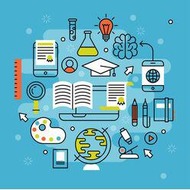
(View Complete Item Description)
This workshop includes historical context, digitized primary sources, and follow-up discussion questions. Students are asked to make arguments for and against providing funding to programs and projects proposed to the Commonwealth Fund, the Rockefeller Foundation, and the Ford Foundation. Taking on the role of program officers during the Cold War and working in small groups, students will read primary sources and articulate why a foundation should or should not provide funding to these proposed ideas. As a whole group, the studentswill participate in a debate as to which of the proposed ideas would be the most effective tool for furthering American Cold War interests. Students are encouraged to use this workshop as a springboard for further research into the role foundations played during the Cold War.
Material Type:
Activity/Lab,
Homework/Assignment,
Lesson Plan,
Module,
Primary Source,
Reading,
Teaching/Learning Strategy
Author:
The Rockefeller Archive Center




















